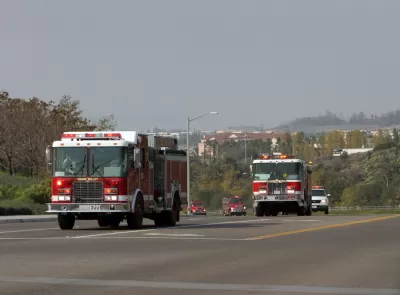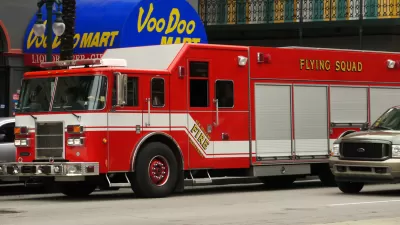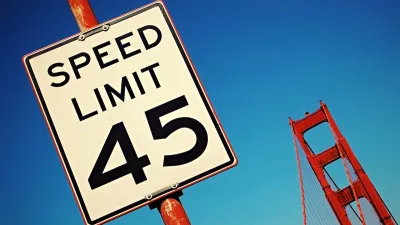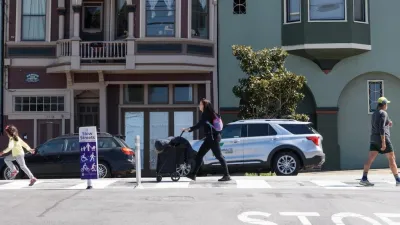A few pioneering fire departments are making room for safety (while demanding less space) on city streets.

An article by Angie Schmidt reports on the early signs of a shift in the politics of street design in the United States. First, the background on the relationship between fire safety and traffic safety:
Fire officials often insist on wide clearance to operate their large vehicles, which can be at odds with the principles of safe street design. When cities want to narrow car lanes or add bike lanes to make streets safer for walking and biking, fire departments often water down or even stop the plans before they can get started. Even though traffic fatalities outnumber fire deaths in the U.S. by more than 10 to 1, fire officials tend to get the final word.
That familiar narrative isn't true in every corner of the country, however, and Schmidt points to Portland, Oregon, "where the Fire Department participates in the street design process led by the city’s Bureau of Transportation," for an example.
The Portland Fire Department's support safe streets doesn't stop during the design process, the Fire Department has followed up by tracking the performance of streets after changes.
“There has been no reduction in response times by working with urban planners and transportation leaders to build out Portland,” [Portland Fire Chief] Myers said on a recent webinar hosted by the National Association of City Transportation Officials.
Schmidt also finds another example in San Francisco, where the city has purchased eight smaller "'Vision Zero' engines made by Ferrara Fire Apparatus that can execute sharper turns than typical American fire trucks," according to Schmidt.
FULL STORY: How Fire Departments Stopped Worrying and Embraced Safer Street Design

Planetizen Federal Action Tracker
A weekly monitor of how Trump’s orders and actions are impacting planners and planning in America.

Map: Where Senate Republicans Want to Sell Your Public Lands
For public land advocates, the Senate Republicans’ proposal to sell millions of acres of public land in the West is “the biggest fight of their careers.”

Restaurant Patios Were a Pandemic Win — Why Were They so Hard to Keep?
Social distancing requirements and changes in travel patterns prompted cities to pilot new uses for street and sidewalk space. Then it got complicated.

Platform Pilsner: Vancouver Transit Agency Releases... a Beer?
TransLink will receive a portion of every sale of the four-pack.

Toronto Weighs Cheaper Transit, Parking Hikes for Major Events
Special event rates would take effect during large festivals, sports games and concerts to ‘discourage driving, manage congestion and free up space for transit.”

Berlin to Consider Car-Free Zone Larger Than Manhattan
The area bound by the 22-mile Ringbahn would still allow 12 uses of a private automobile per year per person, and several other exemptions.
Urban Design for Planners 1: Software Tools
This six-course series explores essential urban design concepts using open source software and equips planners with the tools they need to participate fully in the urban design process.
Planning for Universal Design
Learn the tools for implementing Universal Design in planning regulations.
Heyer Gruel & Associates PA
JM Goldson LLC
Custer County Colorado
City of Camden Redevelopment Agency
City of Astoria
Transportation Research & Education Center (TREC) at Portland State University
Camden Redevelopment Agency
City of Claremont
Municipality of Princeton (NJ)





























